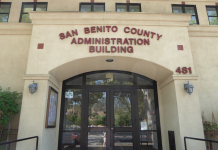Hollister
– As they struggle to fill a growing hole in their labor market,
some local farmers and employee contractors are blaming their woes
on gas prices, faulty immigration policy and the high cost of
living in California.
Hollister – As they struggle to fill a growing hole in their labor market, some local farmers and employee contractors are blaming their woes on gas prices, faulty immigration policy and the high cost of living in California.
Joe Tonascia, a local vegetable farmer who employs between 30 and 40 workers during his six-month harvest from October to April, reckoned the labor shortage might cost him nearly $100,000
“It’s been hitting me all season long,” he said. “It’s been a tremendous battle.”
But Tonascia is lucky in some respects. Some of his workers are local and a few have been with him for 10 or more years, he said. Other farmers, such as Ken Perry, who grows apples and employs close to 80 workers during his two-month harvest starting in September, rely on the once steady flow of workers from the Central Valley.
“It’s tight right now,” he said. “You don’t pick your crop … you go broke.”
Perry said a recent job took an extra two weeks because his regular labor supplier, IAS Contracting in the Central Valley, couldn’t fill his request for 30 workers.
With thousands of workers from the central valley trekking to jobs hundreds of miles away, he suspects that high gas prices might be a factor. He said he was willing to pay for a gasoline allowance.
“We’re going to have to work this out,” Perry said. “Because all of these products are going to go to waste.”
Ysidro Rayes of IAS Contracting said the shortage is strangling his business. Normally, he said, his company would have 2,500 workers at various jobs throughout central California. Under the shortage, he put his pool at less than 600.
“There’s nobody coming in,” he said. “They should have figured this out before they put the national guard on the border.”
But immigration policy isn’t the only factor, Rayes admitted. Some workers are striking for higher wages, others are moving to states with lower costs of living and some construction companies are snagging workers from the pool, he said.
“So far we’ve been able to cover all our bases,” said Pete Aiello from Uesugi Farms in Gilroy. “The real test will come in early August when we are harvesting our chili peppers. We’ll see; it will be interesting.”
Aiello said Uesugi Farms employs between 500 and 600 people to pick crops during the peak growing season, but that the numbers have gone down the past few years.
“It’s been gradually getting worse,” Aiello said. “We’ve been able to find some way to get around it. But it has been getting more and more difficult to do that with them locking up borders.”
Tim Chiala, director of farm operations at George Chiala Farms, said he has been forced to give extra work to his employees to ensure that he has enough people to work his fields.
“I’m having to promise people work all the way through,” Chiala said. “I’m having them pull weeds on the side of the road – work I really don’t need. But it is what I have to do just to keep them.”
Chiala estimates that he is losing $10,000 per week by having workers stay on longer than what he actually needs. In a typical year, Chiala hires about 300 people to work the fields, but that number fluctuates depending on the work that needs to be done.
The potential economic effect is still hazy.
Aiello said the worst-case scenario is that farmers may have to leave their fields fallow, which could affect the local supply of produce.
Chiala didn’t think there would be too much of an effect on consumers’ pocketbooks, since stores can go to other countries and keep prices low, but at another potential cost. He said locally grown produce is held to higher standards than in other countries, such as Mexico, which he said ensures the safety of the food.
Marc Grossman, principal spokesman for the United Farm Workers of America, said he has seen anecdotal evidence that there is a shortage across the state, but said it could be the result of labor conditions.
“We think 10 to 15 percent of workers are forced to leave every year,” Grossman said. “That has more to do with – not all of, but a lot – how people are treated.”
Grossman cited five recent heat deaths in the Central Valley.
He questioned the reported labor shortage, saying the decrease in workers could be attributed to wages not rising like they should if there was a competition for labor.
“If there were sustained labor shortages, why don’t we see any significant increases in wages?” Grossman said. “We don’t see any significant evidence in the improvement of wages.”
Banks Albach covers local government for the Free Lance. Reach him at 831-637-5566 ext. 335, or ba****@***********ws.com. Cheeto Barrera is an intern with South Valley Newspapers.









